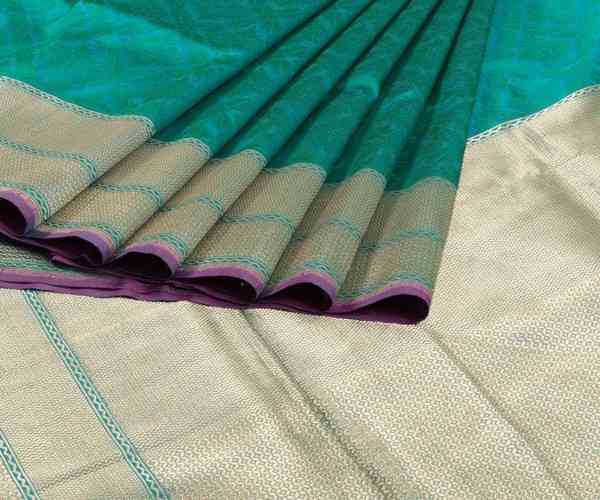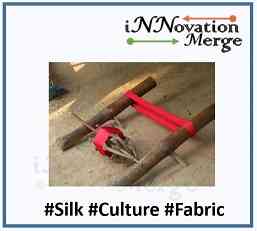For Feedbacks | Enquiries | Questions | Comments - Contact us @ innovationmerge@gmail.com
Types of Silk Sarees
Art silk sarees
- Artificial silk or art silk is produced from synthetic fiber which resembles silk, It is also sometimes known as bamboo silk. Artificial silk is just synonyms for the Rayon. Normally the Art Silk sarees price is less to other Silk Sarees. The first artificial silks were produced in the 1890s from cellulose fiber and popular in the market as art silk or viscose. Artificial silk are nylon, polyester, rayon, etc
- Art Silk became a prominent industrial fiber in a short time frame, permanently replacing silk in many fields. Due to it, the latest art silk designer sarees buy easily by all groups of people.
- It is more slippery compare to others, although it is distinguishable from pure silk. If you want to distinguish both, rubbing the pile in the hand, burning a small piece of the fringe to smell the ash or smoke, or dissolving the pile by performing a chemical test. Hand wove art silk saree are not possible, It always manufactures in the machine.
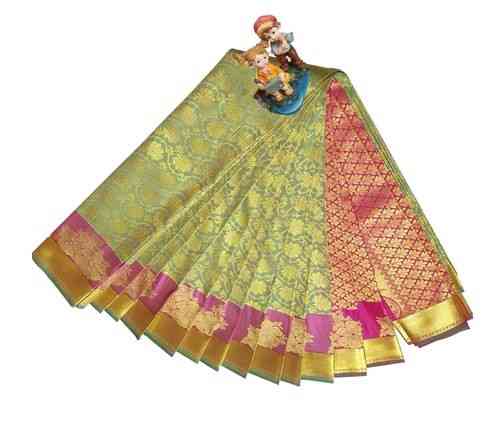
Banarasi silk sarees
- It is a symbol of richness and classiness. It is often part of an Indian bride’s. the Banarasi silk saree features are gold work, compact weaving, figures with small details, metallic visual effects, pallus, jal, and mina work.
- Banarasi Silk Sarees from Varanasi has a great demand for Indian Weddings. It is derived from Varanasi city, which also called Benares or Banaras. Pure elegance Banarasi silk saree is enough to take place in the heart of the bride. The traditional Banarasi sarees is constructing, with a lot of hard work and skillful work by using silk and gold and silver brocade or zari. Always Banarasi silk sarees hand woven and intricate with interweaving floral and foliate motifs, kalga and bel, a string of upright leaves called jhallar at the outer edge.
- It takes 15 days to a month and sometimes up to six months to complete, depends upon the Banarasi silk saree design. It’s main four varieties, which include pure silk (Katan), Organza (Kora) with Zari and silk, Georgette, and Shattir, and according to Banarasi silk saree design process, they are divide into, Jangla, Tanchoi, Vaskat, Cutwork, Tissue, and Butidar. Banarasi silk sarees price normally starts from Rs20,000 till the Banarasi Silk Saree bridal collection Rs2,00,000.
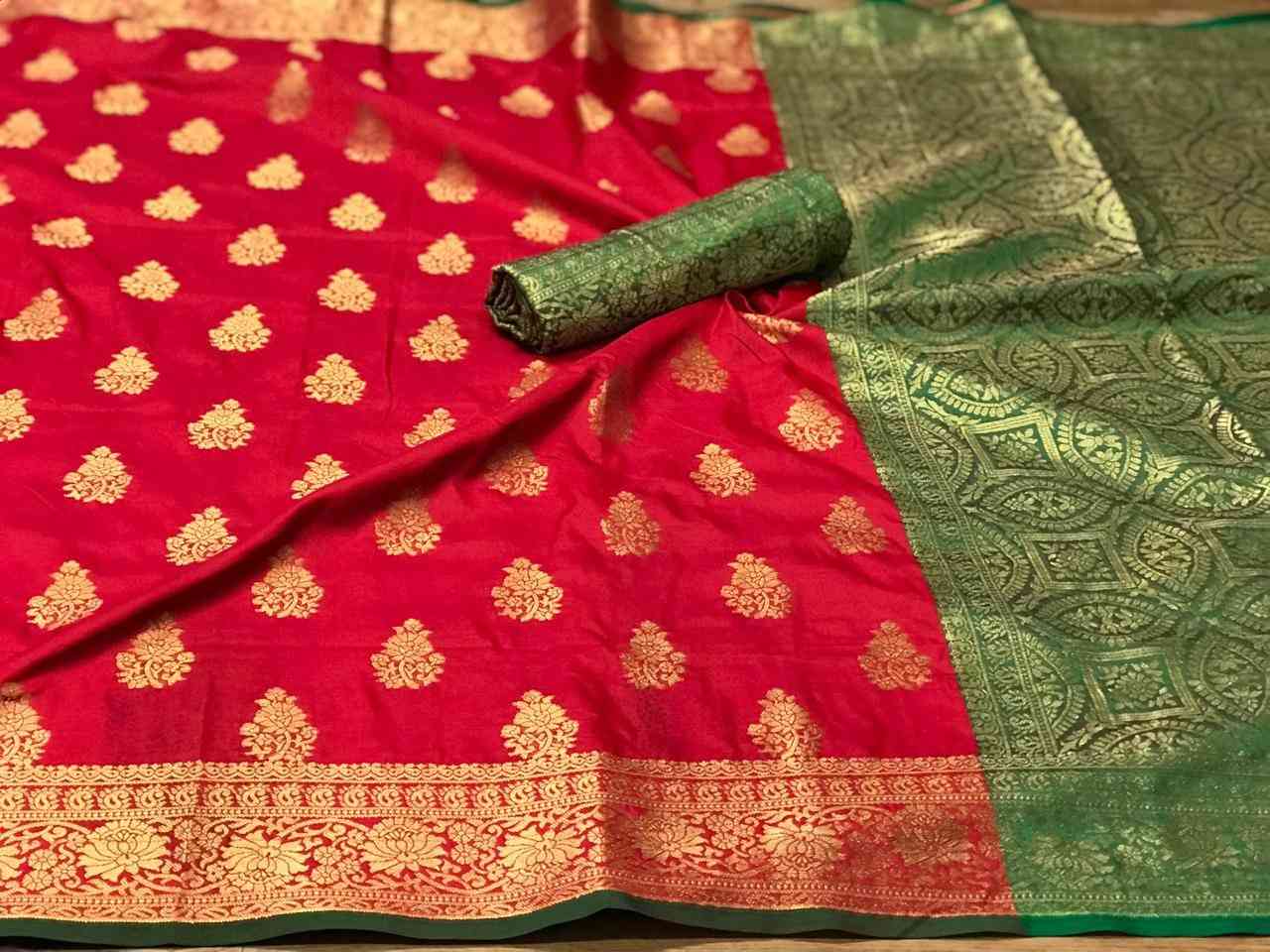
Kanjivaram silk sarees
- Kanjivaram Silk Saree is considered as a royal, heritage, and wealthy saree among all silk sarees. It is mostly preferred by the bridal of south India for a special occasion.
- Kanjivaram saree is also known as Kanchipuram silk saree, the origin of the Kanchipuram region in Tamil Nadu. It is weave from pure mulberry silk of Kanchipuram and zari from Gujarat. It is weave in 3 shuttles. Traditional kanjivaram silk saree distinguishes with its contrast border, temple borders, checks, stripes, and floral motifs. The cost of depending upon the Kanjivaram Silk Saree design, color, pattern, and quality of silk & zari used.
- As per the legends, it is believed that this silk was considered to be Lord Shiva’s and Lord Vishnu’s favorite fabric. Its Durability and shiny made this saree popular all over the world, especially in the south zone of Indian weddings, festive and occasions. In traditional Kanchipuram Silk Saree, the body and border are weave separately and then interlocked together with zig-zag line. The Kanjivaram Silk Saree price starts from Rs.15,000 to the Kanjivaram silk bridal saree collection Rs.5,00,000
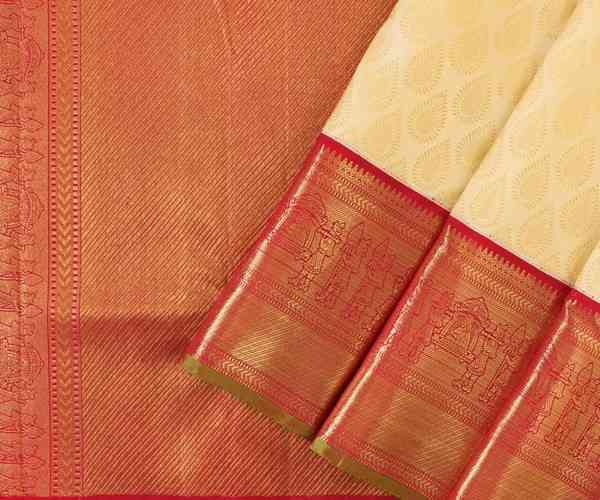
Kota silk sarees
- This Sarees are very light weighted and easy to handle. It is also popular as known as ‘Kota-Masuria’ from the 17th and early 18th centuries. Except for sarees this fabric used in Salwar Kameez, Lehengas, and Home furnishings items. It is derived from kaithun in Kota, Rajasthan.
- Kota Doria or Kota Doria made of pure cotton and silk and weave in square checks patterns known as chowkdi. They smudge onion juice and rice paste with a lot of care into the yarn making the yarn so strong that no additional finishing is required for preparation. The kota Silk Saree price range starts from Rs 4000 onwards.
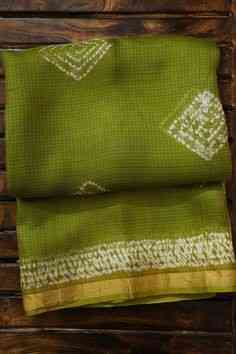
Mysore silk sarees
- It is mostly worn during the Indian festivals or weddings by ladies, it is more of an occasion oriented fabric. Mysore silk saree has a royal vibe that suits ceremonial occasions. Brides of Karnataka first prefer Mysore silk saree for the wedding day.
- The Mysore silk comes from the city of Mysore, Karnataka. Its manufacture from pure silk with gold Zari. Inspired by the natural ambiance and customs of the time, the Mysore silk sari continues to preserve the heritage of India. The demand for a Mysore Silk saree is unbeatable not only in India but also in abroad. It is considered to be the purest form of silk, its silk is so soft buttery silk also Mysore silk saree collection is very light and beautiful with not much of bling.
- It is popular because of its durability and its long-lasting luster. Mysore silk produced from mulberry silk and it is the highest quality of silk from the cocoons. The Mysore Silk Saree Price range starts from Rs.6000 to Rs.20,000. Nowadays it is available in more color and variety. Its print is gaining popularity around the globe.
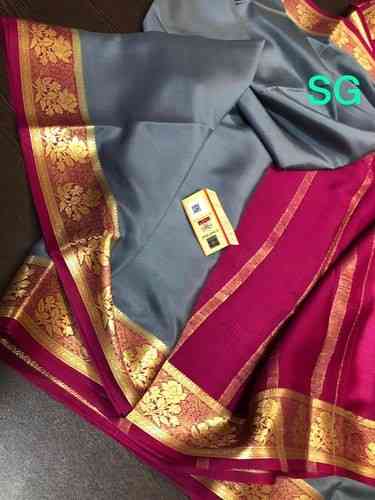
Narayanpet silk sarees
- There is a different style attach with Narayanpet silk saree, the sarees have a checks design with embroidery and the border or pallu have intricate with ethnic temple design. The contrast look with small zari weaves in borders and pallu of the Narayanpet Silk Sari. It takes 4 – 5 days to be complete. The style of weaving shows the distinct influence of two states, i.e. Maharashtra and Telangana, because of weaver migrated from the Maratha region to Narayanpet.
- These sarees have had the privilege of enjoying the royal partisanship of the Marathas. The pure Narayanpet silk sare is weave in dark earthy shades. Normally these sarees are for daily wear so it doesn’t have any motifs in it. It distinguishes by its rich pallu with a unique pattern of alternating red and white bands.
- Its unique process where eight sarees are made at one go on a loom, instead of the standard 7 yards of fabric being ascend on the loom, 56 yards of Silk is ascended on the loom at a single time. The Narayanpet Silk Saree price starts from Rs.1000 to Rs.6000.
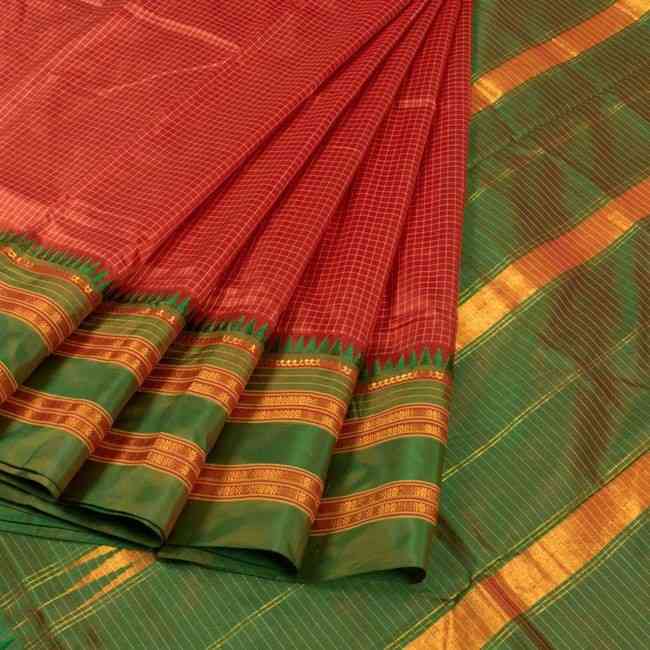
Organza silk sarees
- Organza is a famous fabric traditionally produce from silk. Sometimes it is also manufactured by using synthetic materials like nylon or polyester. The Organza saree is soft and thin, other similar materials, used in sarees are luster-free and have a graceful finish. Despite being delicate and thin in its appearance, organza is actually lusty.
- Actually, it is a mixture of three materials- Silk, Polyester, and Nylon. The traditional pure organza silk sarees are produced from silk only. Organza Tissue silk saree is a sheer fabric, which is very thin and light in weight, and assemble it in plain weave. This fabric is perfect to handle evening occasion.
- Organza fabric derives from material that was called Organzine, which was made from strong fibers of silk that were twisted yarn and then weave them to accord texture and sheen to the fabric. The yarn is first dug and then proceed with the acid process to add crispness. Organza Silk Sarees Price starts from Rs 5000 onward
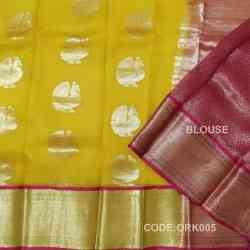
Ponchampally silk sarees
- Pochampally Silk Saree is the origin of the town of Boodhan Pochampally, located in the Nalgonda district of Andhra Pradesh. The town is popular as the silk city of India, these sarees are culturally popular for the Ikat weave and designs imprinted on this fabric. It is a blend of the essence of cotton and silk together by weaving them together. These Ikat patterns are basically weaved on the fabric in geometrical designs ensuring that the entire look capture complete attention of the wearer as well as to the onlooker.
- The South Indian brides prefer pochampally silk saree for wedding ceremonies. It’s ikat weave resemble like patola weave. The weave motifs of a Pochampally saree have more traditional motifs like elephants, peacocks and floral and also include geometric and zigzag designs in it. Pochampally silk saree price range starts from 10,000 Rs onward.
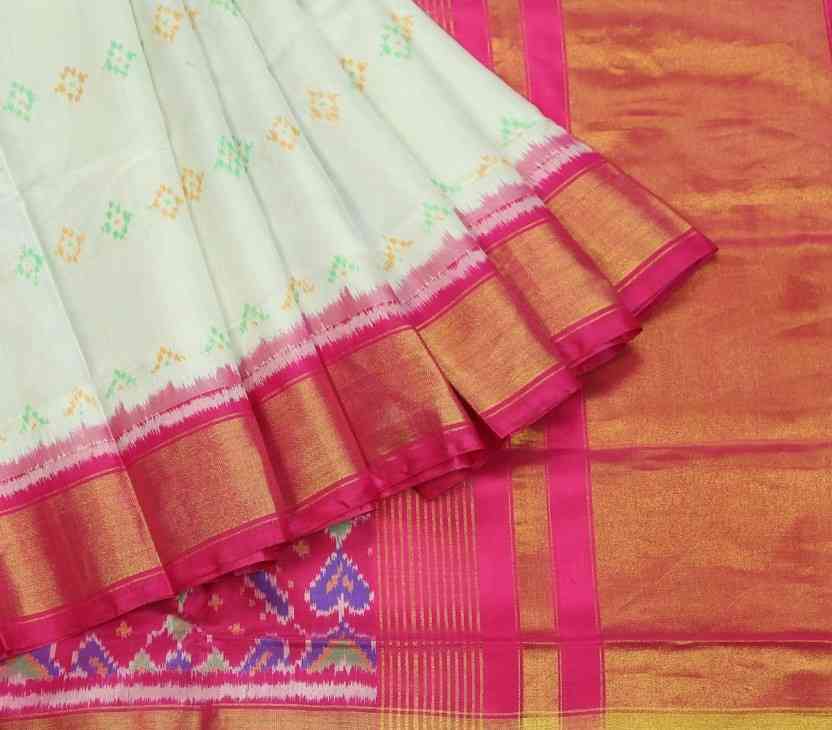
Uppada silk sarees
- Uppada Silk is named derive from a small beach of Uppada in East Godavari district of Andhra Pradesh. It made from the age-old Jamdani method. Uppada Silk sarees are described by its length and breadth count of threads. The weaver uses a lot of zari work in the graceful designs of Uppada Silk sarees.
- Uppada silk saree weaving process takes approx 10 – 60 days time for which at least 2-3 weavers have to spend 10 hours of their day. They use pure silver zari lace dip in melted gold and fine silk to weave. Uppada Silk Saree designs are in most common patterns include geometric, flowers, leaves, etc. However the specialty of the saree is, it can be folded and fit in a matchbox. The uppada silk saree price range is between five thousand rupees to twenty thousand rupees.
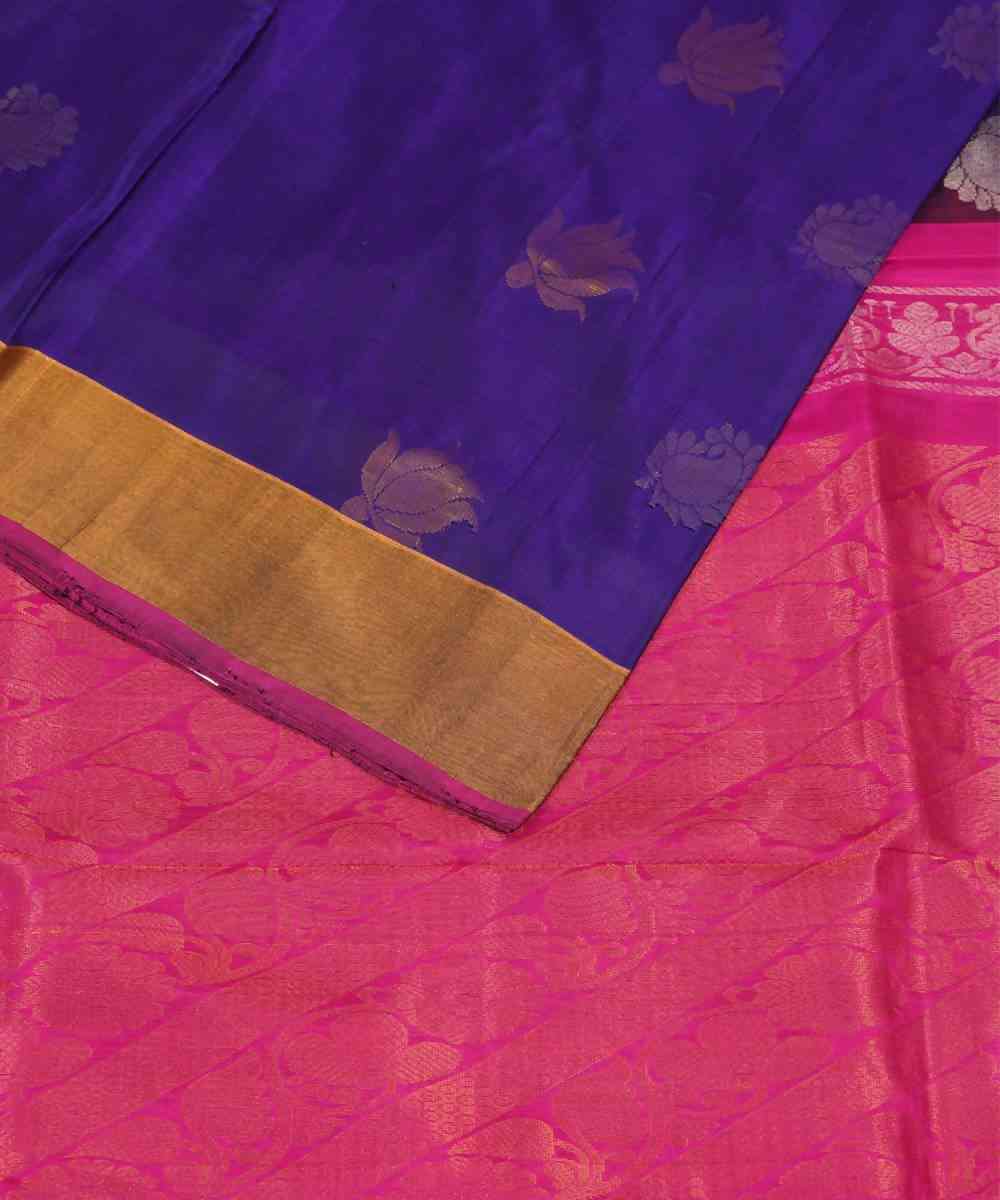
Raw silk sarees
- Raw silk, which is popularly known as ‘Paat’, ‘Resham’, ‘Pattu’ in a different zone of India, It is the most natural form of fine fiber that can easily and smoothly be woven into different fabrics. These made from mulberry tree silk made yarns in short and damaged yarns, bound together in a spun thread. These also have lustrous sight and soft feel with a textured effect due to the short yarns made into the fabric. Price starts from 7000 onwords.
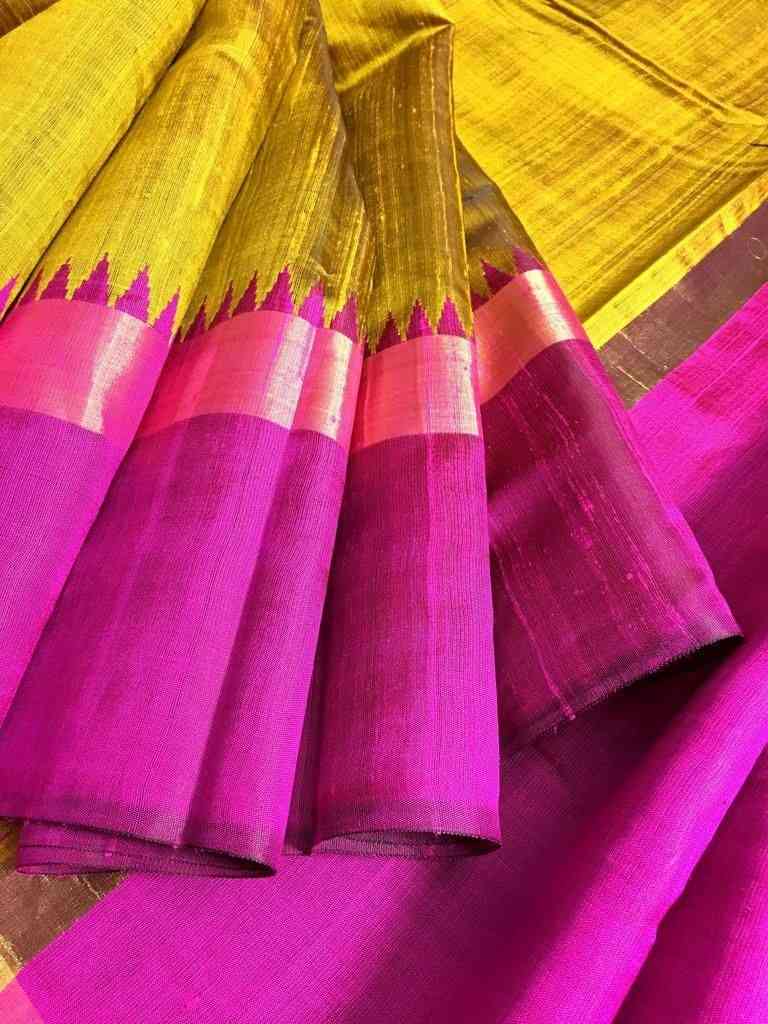
Assam silk sarees
- Every woman has a dream to have one Silk Saree of Assam in their wardrobe because of its delicate and lightweight feature. its silk is always popular since ancient times. Its silk is driven in three major types of wild silks, which produced in Assam - golden Muga, white pat/part, and warm Eri silk. The silk industry in Assam, now centered in Sualkuchi, is a labor-intensive industry. Traditional Assam Silk Saree is completely hand-woven. It takes more than a month to complete. Assam Silk Saree price range is not much expensive as patola and Kanjivaram silk saree. Saree range starts from Rs.5000 onwards.
Mooga silk sarees
- The mooga silk sarees is produced from the Antheraea assamensis silkworm feed aromatic plant in Assam, this silkworm produced lustrous glossy golden tint silk. Its luster increasing after every wash. Muga silk firstly dyed then after bleached. Muga silk is now weaved into beautiful, intricately design, traditional Assamese wear for ladies (mekhela chadar).
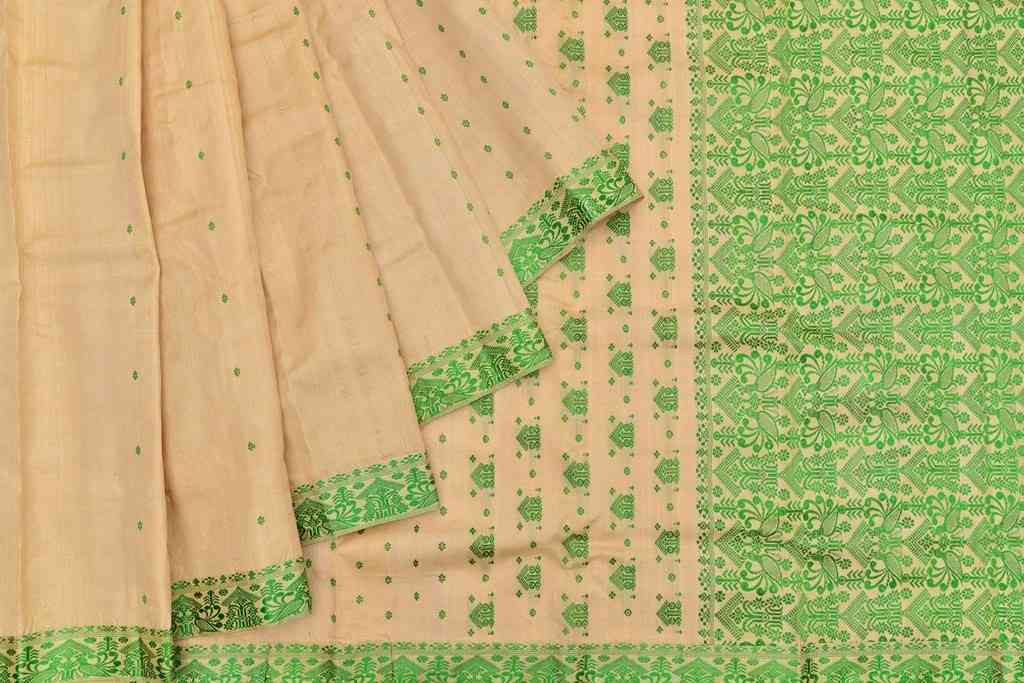
Assam Pat/Paat Silk Saree
- Pat silk is produced by Bombyx textor silkworms which found on mulberry leaves. It is usually in brilliant white or off-white color. It is lightweight and delicate in texture, it has good durability. Saree is woven into bright colors traditional motifs, which include flowers, human figures, animals, etc, around the border. It perfectly compliments the Assamese bride.
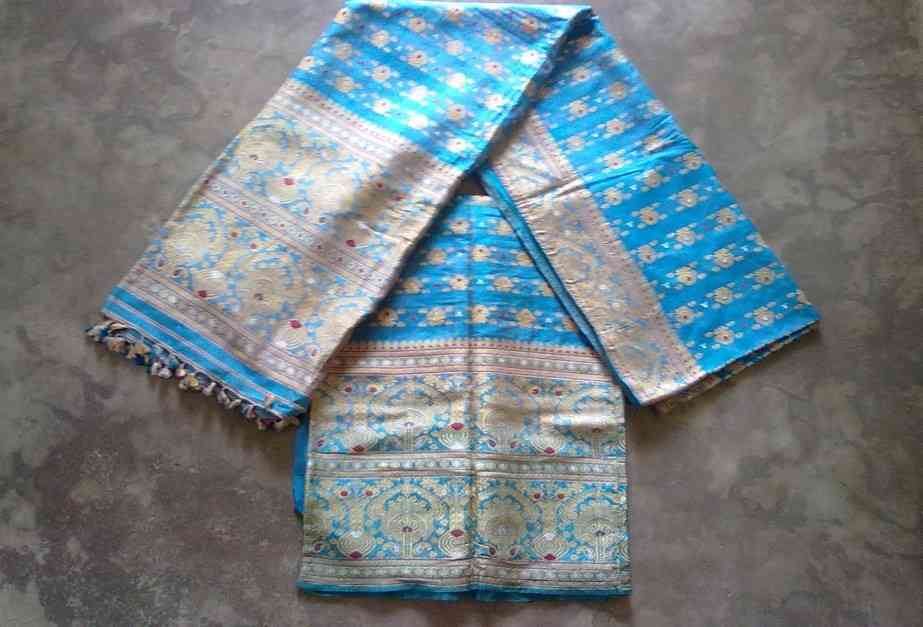
Eri silk saree Assam
- Eri silk is produced from ailanthus silkmoth which feeds on leaves of castor oil plant. It is popular as non-violent silk, also often known as the ‘poor’ man’s silk. This silk has a rough texture and less lustrous than the other two silk sarees of Assam.
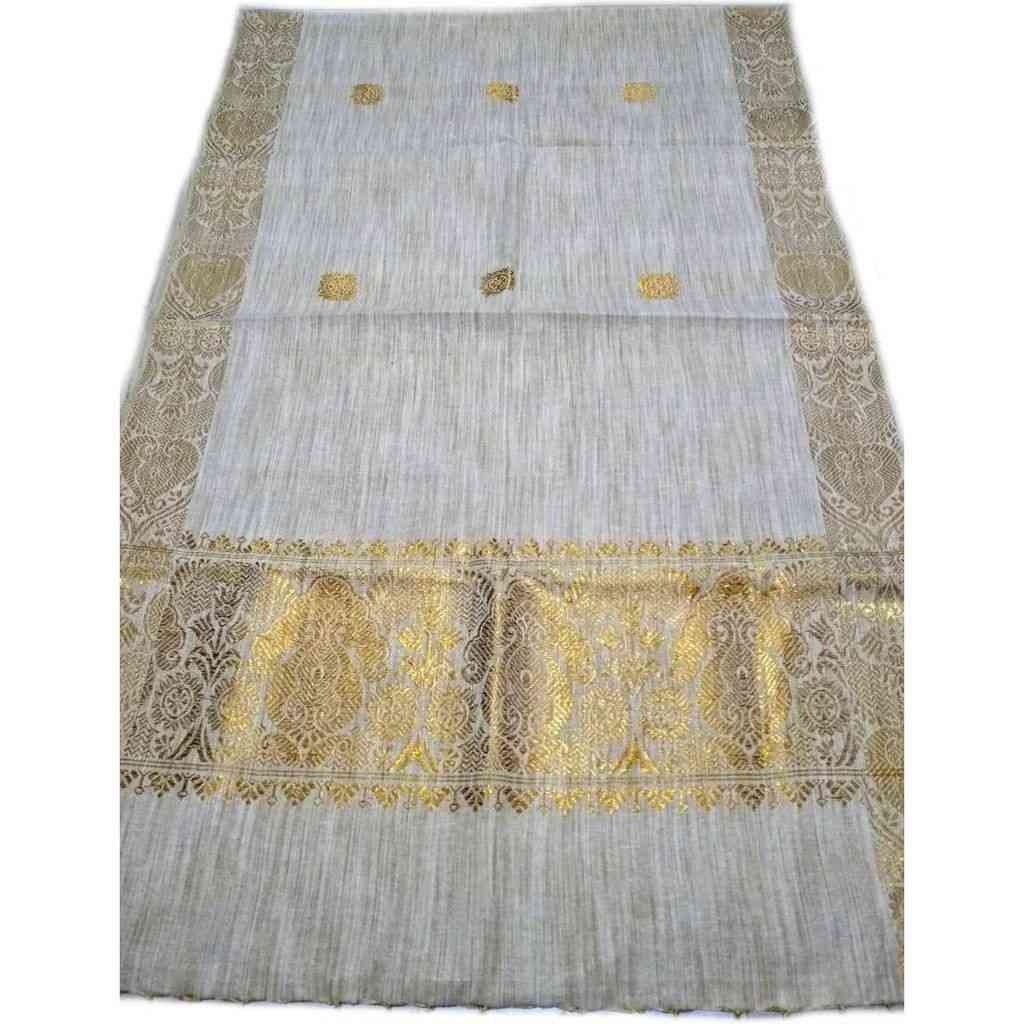
Tanchoi silk sarees
- Tanchoi is the weaving process, where a single or double warp and two to five colors on the weft which are of the same shade weave with Silk fabric. These sarees are intricate with small weaving patterns over the fabric, general patterns of flowers, small birds in flight, peacocks, and parrot motifs. The fabric texture of tanchoi is the same as the satin fabric. It is perfect for formal occasions, wedding ceremonies, or festivals. The credit of innovation of tanchoi is going to the weavers of Banaras, who brought zari into the already complex weave of art. Banarasi Tanchoi has several different varieties are Satin Tanchoi , Satin Jari Tanchoi, Atlas, or Gilt, Mushabbar. Price starts from 35000 onwards.
